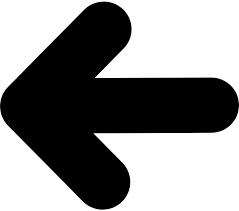What are the recommended treatments for migraine?
Treatments range from OTC pain relievers and triptans for acute relief to preventive measures like CGRP inhibitors, Botox injections, or lifestyle changes. Complementary therapies like biofeedback, acupuncture, or magnesium supplements may also help. Consult with a doctor for a tailored treatment plan based on frequency and severity.

1
Over-the-Counter (OTC) Medications
103
21
Common OTC pain relievers, such as ibuprofen, aspirin, and acetaminophen, can help reduce migraine symptoms when taken early. However, frequent use can lead to rebound headaches.

2
Ginger
95
22
Ginger may help alleviate nausea and reduce migraine severity. It can be consumed as a tea, in supplements, or freshly grated into meals to promote symptom relief.

3
Biofeedback
88
21
Biofeedback therapy teaches individuals to control bodily functions such as muscle tension and heart rate, which can help reduce migraine frequency and severity.

4
Herbal Supplements
69
16
Butterbur and feverfew are two herbal remedies commonly used to prevent migraines. Consult with a healthcare provider before use to ensure safety and appropriate dosing.

5
Nerve Blocks
64
15
Nerve block injections, often targeting the occipital nerve, can provide temporary relief for severe migraines. This procedure is done by a medical professional in a clinical setting.

6
Triptans
72
23
Triptans, such as sumatriptan and rizatriptan, are prescription medications that help relieve symptoms by narrowing blood vessels in the brain and blocking pain pathways.

7
Essential Oils
63
15
Lavender and peppermint oils are known for their calming and analgesic effects. Applying diluted oils to the temples or inhaling the aroma may help relieve mild migraine symptoms.

8
Acupuncture
59
12
Acupuncture is a complementary therapy shown to provide relief for some migraine sufferers. It involves inserting thin needles into specific points on the body to alleviate symptoms.

9
CGRP Inhibitors
92
46
Calcitonin gene-related peptide (CGRP) inhibitors, like erenumab and fremanezumab, are a newer class of medications designed to prevent migraines by blocking the CGRP protein.

10
Meditation and Mindfulness
58
15
Meditation and mindfulness practices can lower stress and increase relaxation, helping to prevent migraines by reducing emotional and physical tension.

11
Exercise and Physical Activity
69
33
Regular, low-impact exercise, such as walking or swimming, can reduce stress and improve sleep, potentially reducing migraine frequency. Avoid intense workouts, which may trigger migraines.

12
Neuromodulation Devices
53
19
Devices like Cefaly or gammaCore deliver mild electrical or magnetic pulses to nerves associated with migraine pain. These FDA-approved, non-invasive devices are a newer treatment option.

13
Dietary Adjustments
42
12
Identifying and avoiding trigger foods like caffeine, alcohol, and aged cheeses can help reduce migraine occurrence. Keeping a food diary can aid in identifying specific dietary triggers.

14
Botox Injections
40
13
Botox injections have been FDA-approved for chronic migraine prevention. They work by blocking pain pathways and are generally administered every 12 weeks by a healthcare professional.

15
Preventive Medications
39
13
Beta-blockers, anti-seizure drugs, and antidepressants are often prescribed for chronic migraines to reduce frequency and intensity. These medications are usually taken daily.

16
Magnesium Supplements
36
13
Magnesium deficiency has been linked to migraines, so taking magnesium supplements may help reduce frequency, especially for menstrual migraines. Consult a doctor for appropriate dosage.

17
Hydration and Electrolytes
29
7
Dehydration is a common migraine trigger, so staying hydrated and consuming electrolyte-rich beverages may help prevent migraines, especially in hot or dry climates.

18
Riboflavin (Vitamin B2)
23
5
Riboflavin has shown some effectiveness in migraine prevention. A daily dose of 400 mg may reduce migraine frequency, though results may take several months to appear.

19
Cognitive Behavioral Therapy (CBT)
28
11
CBT helps patients manage stress and pain related to migraines by changing thought patterns and reactions, potentially reducing both the frequency and severity of attacks.

20
Lifestyle Adjustments
20
10
Regular sleep, balanced meals, and stress reduction can help manage migraines. Maintaining a consistent daily routine can be particularly effective in reducing frequency.

